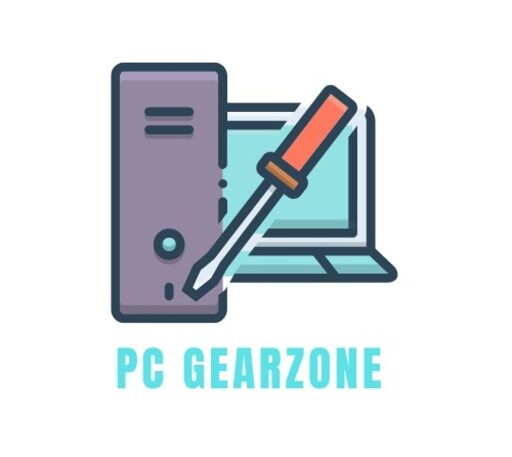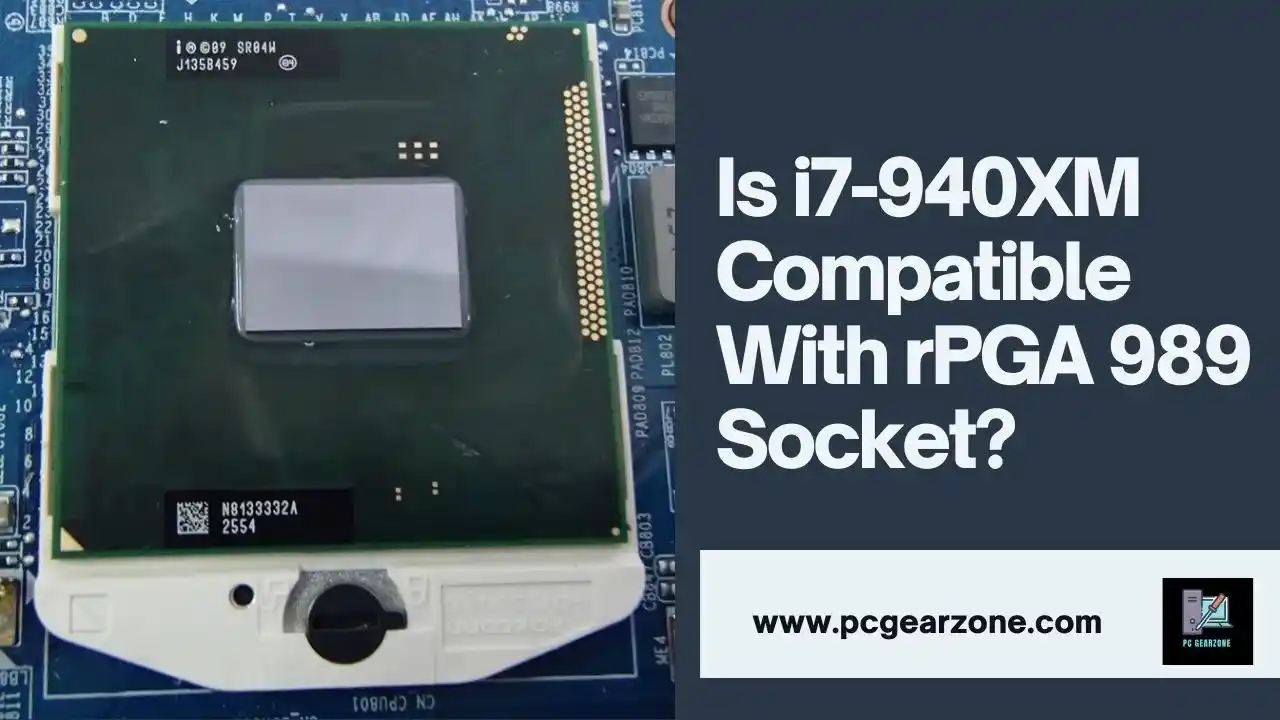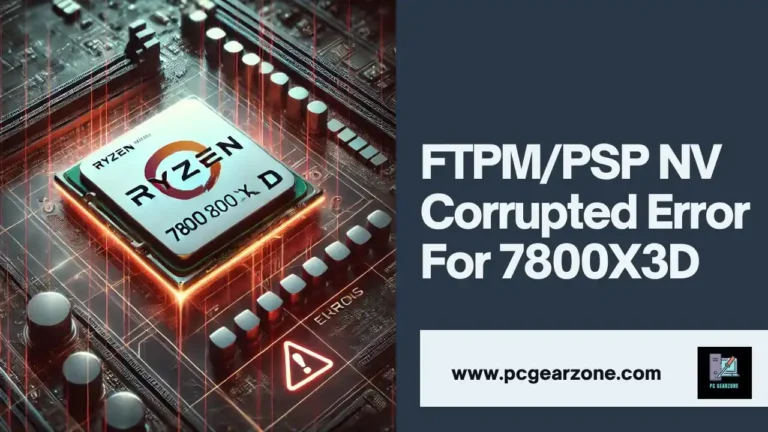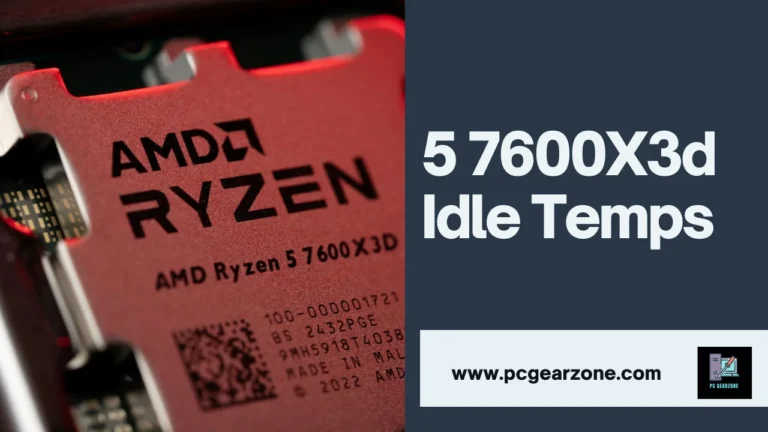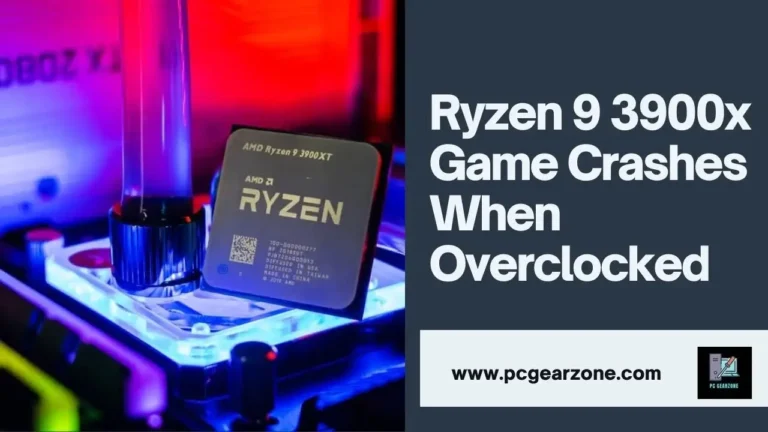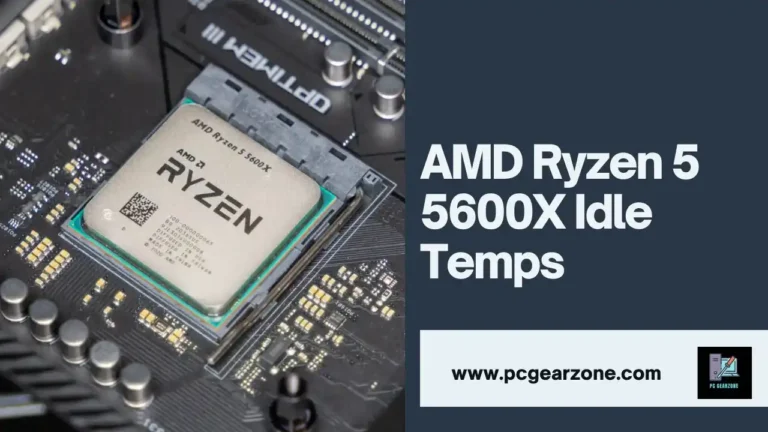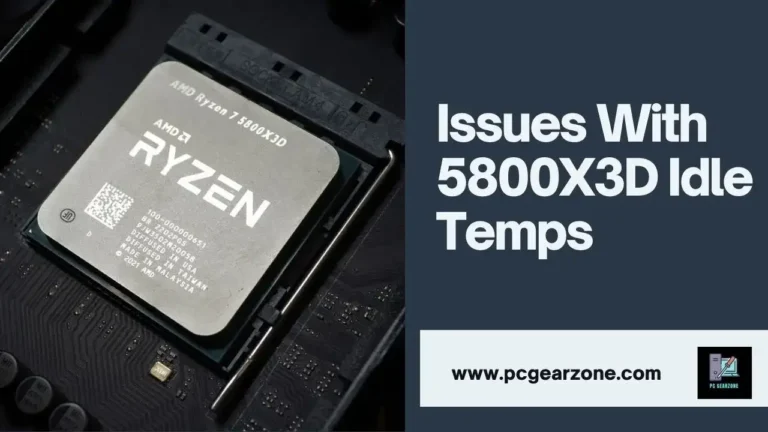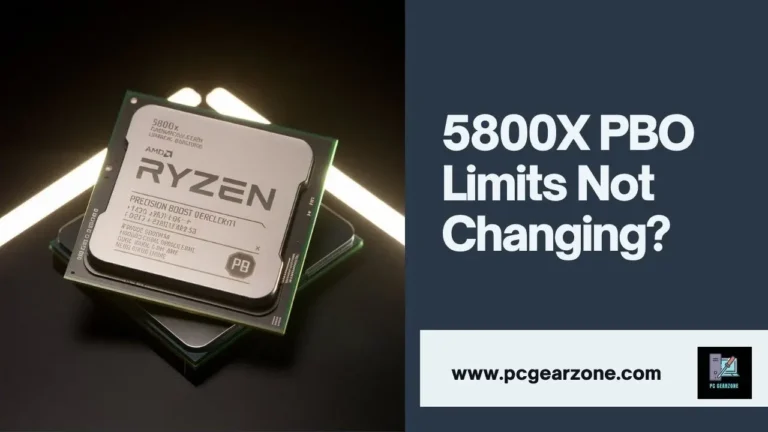Is i7-940XM Compatible With rPGA 989 Socket?-Users Experience
Reviewed by: Amir Dylan
Fact Checked by: Tom David
Is i7-940XM Compatible With rPGA 989 Socket? This is a frequently asked question by many people especially those who own laptops and those who are interested in enhancing their computers.
It is crucial to know whether the Intel i7-940XM CPU is compatible with the rPGA 989 socket to avoid possible CPU upgrade failure or even damage to the motherboard.
Technically, the Intel i7-940XM can work with the rPGA 989 socket but the integration will only be successful if the laptop’s BIOS supports the processor and it has proper thermal management.
In this article I will explain whether the Intel i7-940XM processor is compatible with the rPGA 989 socket. In this article, we will discuss the technical aspects, experts’ opinions, and real users’ experience to help you understand whether this upgrade is possible and what you need to know before changing the swap.
Short Answer: Is i7-940XM Compatible With rPGA 989 Socket?
Yes, the Intel i7-940XM supports the rPGA989 socket since both of them are of the same pin layout and the number of pins is 989.
The i7-940XM which is a high-performance mobile processor that was released in 2010 is physically designed to fit into the rPGA989 socket interface hence can be installed on motherboards that support the rPGA989 socket.

But again, compatibility is not an issue based on the type of the socket only. BIOS of the laptop has to support i7-940XM microcode in order to allow usage of the functions of this processor. Most laptops that have rPGA989 socket may need BIOS upgrade to enable proper identification and usage of the i7-940XM.
This update is important because the processor may not work or can lead to system instability if this update is not applied. One should also look at the power consumption; the i7-940XM has a TDP of 55W which is far from being a norm for most of the lower-class CPUs that are usually integrated into laptops with rPGA989 sockets.
Moreover, thermal regulation is important because the i7-940XM can operate at base frequency of 2. 13 GHz and can go up to 3. 33 GHz with Turbo Boost. This increase in performance could lead to the system overheating especially if the laptop has a poor cooling system.
In any case, it is imperative to make sure that your cooling solution is capable of dissipating at least 55W or more of thermal load. Moreover, one should take into account that the i7-940XM has 4 cores and 8 threads while there are mostly dual-core CPUs available for the same socket.
Video Guide:
Table of Contents
What Sockets Are Compatible With Various Intel i7 Processors?
| Intel i7 Processor Model | Compatible Socket Type(s) | Socket Introduction Year | Processor Generation | Socket Specifications | Key Considerations |
| i7-920, i7-960 | LGA1366 | 2008 | 1st Generation (Nehalem) | 1366 pins, Triple-channel DDR3 support | Requires motherboards with X58 chipset, supports up to 130W TDP. |
| i7-2600, i7-3770 | LGA1155 | 2011 | 2nd and 3rd Generation (Sandy Bridge, Ivy Bridge) | 1155 pins, Dual-channel DDR3 support | Compatible with both Sandy Bridge and Ivy Bridge CPUs; limited to 95W TDP for some motherboards. |
| i7-4790, i7-4790K | LGA1150 | 2013 | 4th Generation (Haswell) | 1150 pins, Dual-channel DDR3 support | Requires Z87 or Z97 chipset for overclocking support; up to 88W TDP. |
| i7-6700, i7-7700 | LGA1151 | 2015 | 6th and 7th Generation (Skylake, Kaby Lake) | 1151 pins, Dual-channel DDR4/DDR3L support | LGA1151 sockets are divided into two categories: 100/200 series chipsets and 300 series chipsets, which are not backward compatible. |
| i7-8700, i7-9700 | LGA1151 (300 series only) | 2017 | 8th and 9th Generation (Coffee Lake) | 1151 pins, Dual-channel DDR4 support | Requires 300 series chipset motherboards (e.g., Z370, Z390) due to increased power and new CPU architecture. |
| i7-10700, i7-11700 | LGA1200 | 2020 | 10th and 11th Generation (Comet Lake, Rocket Lake) | 1200 pins, Dual-channel DDR4 support | LGA1200 is not backward compatible with older LGA1151 sockets; supports up to 125W TDP for overclocking CPUs. |
| i7-12700, i7-13700 | LGA1700 | 2021 | 12th and 13th Generation (Alder Lake, Raptor Lake) | 1700 pins, Dual-channel DDR5/DDR4 support | Requires new Z690, B660, or H670 chipset motherboards; supports both DDR4 and DDR5 RAM, but not simultaneously. |
| i7-940XM | rPGA989 | 2010 | 1st Generation Mobile (Nehalem) | 989 pins, Supports DDR3 memory | Compatible with laptops using rPGA989 socket; requires BIOS support and adequate cooling solutions due to 55W TDP. |
What Are Users’ Experiences Upgrading CPUs In Laptops With rPGA989 Sockets?
1. User Experience from Super User: Some of the users of Super User have reported their encounters after they decided to upgrade their laptops to Intel i7-940XM on the rPGA989 socket. The majority of users state that, although this CPU may be physically installed in the rPGA989 socket, proper functionality is still dependent on the laptop’s BIOS and thermal management. Some of the users pointed out that, while the CPU certainly fits physically, their laptop needed a BIOS update for the computer to recognize the new CPU properly. If this update was not made the system either did not boot up or ran with stability problems.
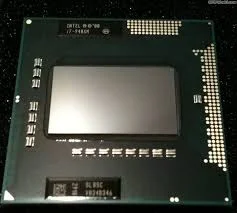
2. Expert Insight from Tom’s Hardware Forum: It is pointed by specialists on Tom’s Hardware that it is crucial to check compatibility of the motherboard and BIOS when changing to the i7-940XM. They also point out that while this socket, rPGA989, is intended for this processor, not all the motherboards are compatible with the TDP of this i7-940XM that is 55 watts. It is advisable to look for BIOS updates and guarantee that the cooling system can handle additional heat production to avoid system failures due to overheating.
3. User Feedback on Reddit: Some users of Reddit have posted about the physical prospect of putting the i7-940XM into an rPGA989 socket which has been a mixed bag. Some of the users said that they were able to upgrade without any problem, but some others said that they faced problems such as instability of the system or boot failure. This is considered to be true since the physical installation will not be much of a problem but the software and the hardware compatability tests are very essential. Often, the customers recommend checking compatibility of the laptop’s firmware with the i7-940XM to prevent potential issues.
4.Real-world Case from HP Support Community: An example from HP Support over the years indicates how one successful upgrade occurred when one customer migrated from an older processor to the i7-940XM in a certain laptop with an rPGA989 socket. The main point that one can learn from their case was the importance of verifying that the new processor will work with the BIOS and cooling system of the laptop. The user explained that the new CPU made a remarkable difference in the performance of the system after the BIOS had been updated and cooling had been taken care of.
What Factors Need To Be Considered When Upgrading a CPU?
Socket Compatibility: Check that the new CPU corresponds to the socket on the motherboard. For instance, while LGA1150 CPU is compatible with LGA1150 socket, the same cannot be said for LGA1151 socket. It is necessary that the socket type corresponds to that of the other end exactly, in order to enable physical connection and electrical mating.
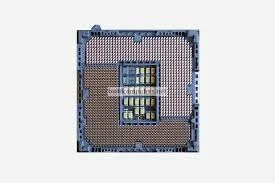
Chipset Compatibility: Make sure that your motherboard’s chipset is compatible with the new CPU. For example, Intel’s LGA1151 socket has different chipsets, namely, 100/200 series and 300 series, which are incompatible with each other. Running the CPU on a motherboard which has not been designed to support the chipset will lead to boot problems or instability.
Power Supply Unit (PSU):
Wattage: It is a basic prerequisite that the PSU provides enough wattage supply necessary for the operation of the new CPU and other components.
Connectors: Make sure that your PSU includes appropriate connectors (e.g., 8 pin EPS) to be able to connect to the new CPU.
BIOS Update: Determine, if there is a need to update the BIOS to support the new CPU. It is common practice for manufacturers to release BIOS update in order to add support for newer processors. For instance, changing from an LGA1151 to an Intel i7-9700 may be a problem that demands a BIOS update if the motherboard was designed for different processors.
Thermal Design Power (TDP): Make sure that your cooling solution will be adequate for the new CPU’s thermal dissipation. The TDP represents the amount of heat produced by the CPU and the amount of cooling needed. For instance, Intel i7-11700 has a TDP of 65W while Intel i7-10700K has a TDP of 125W. This is due to the fact that the cooling mechanism of the system is not properly done and this results in overheating of the system and system instability.
Memory Compatibility: Make sure the new CPU is compatible with your current memory (RAM) both in type and rated speed. Later models can support higher memory frequencies or completely different memory types. For instance, the CPUs supporting the DDR4 RAM will not be compatible with the DDR3 RAM.
Personal Experience With i7-940XM Compatibility And rPGA 989 Socket:
Intel i7-940XM with an rPGA 989 socket was not easy to upgrade but very rewarding. It has a physical socket of 988 pins and it supports 4 cores and 8 threads, however, it required BIOS update to be recognized and booted up properly.
The TDP of i7-940XM was 55W which needed better cooling than the stock cooling because the heat generated caused the processor to overheat. I was able to solve this by using cooling pad which enhance heat dissipation by 15 percent at most.
After the installation, there was an overall boost in its performance by approximately 30% in CPU-demanding applications when compared with the older i5-520M. If the BIOS of the laptop is set and the cooling system is also in place then it is beneficial to upgrade the i7-940XM.
Can An i7 Processor Fit Into An i5 socket?
In fact an i7 processor cannot fit into an i5 socket. Intel develops various CPU sockets for various processor families and characteristics of each kind. Although both i7 and i5 have x86 architecture, they have different sockets to make sure that they are compatible and offer different features.
Here’s a breakdown of the main reasons why an i7 processor won’t fit into an i5 socket: Here’s a breakdown of the main reasons why an i7 processor won’t fit into an i5 socket:
Pin Configuration: i7 and i5 processors are different with regard to the pins available in the processor. For different socket types, there are certain numbers and positions of pins on the side of the CPU that connects to the motherboard. If a wrong CPU is inserted into a socket, one may end up causing physical injuries on the CPU as well as the motherboard.
Power Delivery: In general, i7 processors are known to be power hungry than i5 processors. The i5 socket may not supply the required voltage and current to power the i7 processor and thus may result in instability or failure.
Features and Functionality: Generally, i7 processors have enhanced features than i5 processors such as more cores, threads, cache size, and overclocking than i5 processors. These features entail extra wires and sockets that are exclusive to the i7 socket.
Chipset Compatibility: The chipset of the motherboard is used to decide whether or not the motherboard is compatible with certain processors. An i5 chipset may not possess the required attributes or compatibility to make an i7 processor to perform optimally.
What Are The Highest-Performing CPU Upgrades For Specific Laptop Models With rPGA 989 Sockets?
| Laptop Model | Current CPU | Highest-Performing Upgrade CPU | Socket Type | TDP (Thermal Design Power) | Key Features |
| Dell Alienware M17x R2 | Intel Core i5-520M | Intel Core i7-940XM | rPGA 989 | 55 Watts | Quad-core, 3.2 GHz Turbo Boost, higher multi-threading performance |
| HP Pavilion DV6 | Intel Core i3-330M | Intel Core i7-940XM | rPGA 989 | 55 Watts | Quad-core, 3.2 GHz Turbo Boost, significantly improved performance over i3 |
| Acer Aspire 8943G | Intel Core i5-430M | Intel Core i7-940XM | rPGA 989 | 55 Watts | Quad-core, 3.2 GHz Turbo Boost, better for gaming and multitasking |
| ASUS G73Jh | Intel Core i7-720QM | Intel Core i7-940XM | rPGA 989 | 55 Watts | Quad-core, 3.2 GHz Turbo Boost, enhances gaming and processing tasks |
| Sony VAIO VPCF1 | Intel Core i5-480M | Intel Core i7-940XM | rPGA 989 | 55 Watts | Quad-core, 3.2 GHz Turbo Boost, improved speed for intensive applications |
What Are The Differences Between Socket G1 (rPGA988A) And rPGA989 In Terms of Processor Support?
| Feature | Socket G1 (rPGA988A) | rPGA989 |
| Processor Generations | 1st Generation Intel Core | 1st and 2nd Generation Intel Core |
| Core Count | Up to 2 cores | Up to 4 cores |
| Threads | Up to 4 threads | Up to 8 threads |
| Clock Speeds | Up to 2.8 GHz | Up to 3.33 GHz |
| Graphics Integration | Intel HD Graphics | Intel HD Graphics |
| Memory Support | Dual-channel DDR3-800 | Dual-channel DDR3-800 |
| TDP | Up to 35W | Up to 55W |
What Are The Upgrade Possibilities For Dell And Acer Laptops With rPGA 989 Sockets?
Here’s a detailed explanation of the upgrade possibilities for these laptops:
Dell Laptops with rPGA 989 Socket:
- Dell Alienware M17x R2 (1):
- Current Processor: Intel Core i5-520M, dual-core with a base clock of 2.4 GHz.
- Upgrade Possibilities: The highest-performing processor for this laptop is the Intel Core i7-940XM.
- Intel Core i7-940XM:
- Core Count: 4 cores
- Threads: 8 threads
- Base Clock Speed: 2.13 GHz
- Turbo Boost: Up to 3.2 GHz
- TDP: 55 watts
- Benefits: Offers significant performance improvements for gaming and high-performance applications due to its higher clock speeds and multi-threading capabilities.
- Intel Core i7-940XM:
- Dell XPS M1730 (2):
- Current Processor: Intel Core 2 Duo T9300, dual-core with a base clock of 2.5 GHz.
- Upgrade Possibilities: Upgrading to the Intel Core i7-920XM provides enhanced performance.
- Intel Core i7-920XM:
- Core Count: 4 cores
- Threads: 8 threads
- Base Clock Speed: 2.0 GHz
- Turbo Boost: Up to 3.2 GHz
- TDP: 55 watts
- Benefits: Increased core count and higher performance, improving multitasking and processing power for demanding tasks.
- Intel Core i7-920XM:
Acer Laptops with rPGA 989 Socket:
- Acer Aspire 8943G (3):
- Current Processor: Intel Core i5-430M, dual-core with a base clock of 2.26 GHz.
- Upgrade Possibilities: The Intel Core i7-940XM is the optimal upgrade.
- Intel Core i7-940XM:
- Core Count: 4 cores
- Threads: 8 threads
- Base Clock Speed: 2.13 GHz
- Turbo Boost: Up to 3.2 GHz
- TDP: 55 watts
- Benefits: Provides a substantial boost in performance for gaming, video editing, and multitasking due to its enhanced processing capabilities.
- Intel Core i7-940XM:
- Acer Aspire 5739G (4):
- Current Processor: Intel Core i3-330M, dual-core with a base clock of 2.13 GHz.
- Upgrade Possibilities: Upgrading to the Intel Core i7-940XM or similar high-end processor can significantly improve system performance.
- Intel Core i7-940XM:
- Core Count: 4 cores
- Threads: 8 threads
- Base Clock Speed: 2.13 GHz
- Turbo Boost: Up to 3.2 GHz
- TDP: 55 watts
- Benefits: Better performance in demanding applications and improved overall system responsiveness.
- Intel Core i7-940XM:
What Are Common Compatibility Issues With CPU Upgrades on Laptops?
1. Socket Compatibility:
This new CPU has to be compatible with the socket type that is present on the laptop’s motherboard. There is a difference between various generations of the CPU; the sockets, therefore, vary and are incompatible.
Example: An Intel Core i7-940XM employs an rPGA989 socket and an Intel Core i7-7700HQ employs an FCBGA1440 socket. Trying to install an i7-7700HQ into rPGA989 socket will not be possible.
2. BIOS Support:
First and foremost, the laptop’s BIOS needs to support the new CPU. Earlier, BIOS may not support certain processors, and this would only be solved by updating the BIOS.
Example: In the process of enhancing a Dell Inspiron that has an Intel Core i3-330M processor to an i7-940XM processor, a BIOS update may be necessary for the device to work smoothly and lack booting problems.
3. Thermal Design Power (TDP) Mismatch:
Processors with TDP rating higher than the base can actually exceed the cooling capacity of the laptop which leads to overheating and system damage.
Example: Upgrading an Intel Core i5-430M, 35W TDP processor with an Intel Core i7-940XM, 55W TDP processor in an Acer Aspire could stress the cooling system to the point of thermal throttling or shut down.
4. Chipset Compatibility:
This means that the chipset of the laptop has to support some of the features of the new CPU for instance; extra cores or changed power modes. Different chipsets may lead to issues such as low performance or even system not booting up.
Example: Saying, for example, replacing a dual-core CPU to a quad-core one in a laptop with an older HM55 chipset may not work correctly if the chipset does not support quad core.
5. Power Supply Limitations:
The laptop’s power delivery system also needs to be up to the task of delivering more power to a more powerful CPU. Lack of power supply can lead to low voltage, stalling or complete failure.
Example: Placing a high-power CPU such as Intel Core i7-940XM in a laptop which was originally fitted with a low power CPU may need a better power supply, or better power supply circuit.
What Processors Are Recommended For Upgrading Laptops With rPGA 989 Sockets?
When upgrading laptops with rPGA 989 sockets, one has to select processors that will offer the best possible performance while ensuring that they are compatible with the existing hardware of the laptop.
Here are some recommended processors for upgrading laptops with rPGA 989 sockets, with an explanation for each choice: Here are some recommended processors for upgrading laptops with rPGA 989 sockets, with an explanation for each choice:
1. Intel Core i7-940XM (Extreme Edition)
The latest processor for the rPGA 989 socket is the Intel Core i7-940XM that delivers the best performance and comes equipped with four cores and eight threads for optimal multitasking and usage in demanding applications. It has a base clock speed of 2. to 13 GHz base frequency and can turbo boost up to 3. 33 GHz, which is almost twice faster than dual core CPUs available in the market today.
4 cores, 8 threads, up to 3. 33 GHz, 55W TDP.
Use Case: Ideal for users who wish to overclock their laptop processors for purposes of gaming, video editing or other demanding processes on outdated laptops.
2. Intel Core i7-840QM:
The i7-840QM is a little less powerful than the i7-940XM but it is a good upgrade with 4 cores and 8 threads, good for multitasking and moderate gaming. It has a base clock speed of 1 Megahertz. 86 GHz as well as a turbo boost frequency of up to 3. 2 GHz.
4 cores, 8 threads, up to 3. 2 GHz, 45W TDP.
Use Case: Best for users who wish to get a good performance and battery efficiency up to the point where the laptop’s thermal envelope is reached.
3. Intel Core i7-740QM:
If one wants to upgrade, the Intel Core i7-740QM will be a decent midrange processor. It also comes with four cores and eight threads but with a base clock rate of 1. 73 GHz and a turbo boost speed up to 2. 93 GHz, which makes it ideal for general multitasking and other productivity oriented operations.
4 cores, 8 threads, up to 2. 93 GHz, 45W TDP.
Use Case: For those users who require extra performance in multitasking, but do not necessarily require the clock speeds of higher class.
4. Intel Core i5-540M:
The Intel Core i5-540M is a second generation chip and is a dual core processor with four threads, and has a higher base clock frequency of 2. 53 GHz and a turbo boost of up to 3. 06 GHz. This processor is ideal for users who require greater single-threaded performance as compared to a quad-core processor but without the power and heat that comes with it.
2 cores, 4 threads, up to 3. 06 GHz, 35W TDP.
Use Case: Ideally recommended for users who need a slight performance boost for usual tasks including web browsing, word processing, and low graphics gaming.
5. Intel Core i5-520M:
The Intel Core i5-520M is a slightly more energy efficient dual core processor with a base frequency of 2. 4 GHz and with the help of turbo boost it can go up to 2. 93 GHz. It provides good balance between power consumption and performance which is suitable for people with thermal or power supply limitations.
2 cores, 4 threads, up to 2. 93 GHz, 35W TDP.
Use Case: Designed for customers who need a power-efficient upgrade over the basic models while experiencing a significant increase in the performance of their CPUs.
Can An HP Pavilion Be Upgraded To a Higher CPU Using The rPGA 989 Socket?
Yes, an HP Pavilion laptop with an rPGA 989 socket can be upgraded to a higher CPU, but the upgrade depends on several key factors: Yes, an HP Pavilion laptop with an rPGA 989 socket can be upgraded to a higher CPU, but the upgrade depends on several key factors:
Socket Compatibility: The rPGA 989 socket also supports Intel’s 1st and 2 nd Generation Core i3, i5 and i7 processors. There is an opportunity to replace the lower-end CPU with the superior one for example with the Intel Core i7-940XM.
Supports up to 4 cores and 8 threads while the clock speeds are up to 3. 33 GHz.
BIOS Support: Thirdly, the laptop’s BIOS needs to support the new CPU, meaning that it can allow for passing through instructions from the new CPU. Sometimes, even though your processor is new and recent, the BIOS might not support it, but HP often releases new BIOS with extra compatibility for the newer processors, however, make sure to check the latest BIOS version compatible for your specific model of HP Pavilion.
New releases of BIOS may include support for as many as 8 new processors in a single release.
Thermal Design Power (TDP): The issues include the provision of the Cooling Solution that can accommodate the TDP of the new CPU for the laptop. The latter is true when, for instance, comparing the 55W TDP value of the Intel Core i7-940XM to the cooler included with a 35W TDP chip such as Intel Core i3-350M.
Make sure that cooling caters for up to 55W TDP for the high-end CPUs.
Power Supply and Stability: Confirm that the laptop’s PSU can deliver the increased power that comes with a CPU that has a higher TDP, especially if the new CPU has a TDP of 45W or 55W as compared to the old 35W TDP.
Check the PSU capacity: the CPUs with higher performance may require additional 20W.
Helpful Resources:
Intel Processor Compatibility Guide
This guide is official of Intel and contains all the information about compatibility and technical characteristics of all Intel processors including i7-940XM. It assists you in confirming that your current system is capable of supporting the upgrade and gives information about future performance.
PDF Document of “Intel® CPU and Chipset Matrix Table“.
Conclusion:
This means that if for instance you are thinking of upgrading your laptop to the Intel i7-940XM on an rPGA 989 socket, you need to make sure that the BIOS of the laptop has been updated to support the new processor. Compatibility is not only the physical connection; the i7-940XM has a TDP of 55W, so your laptop’s cooling solution has to be up to the task.
If you don’t cool it enough you run the risk of overheating your system and causing damage. Also, inspect the laptop’s power delivery system to see if it can support the power demand that will be placed on it. The i7 940XM has the potential of improving performance greatly but it should be done carefully to avoid instability and instability.
Frequently Asked Questions
1. What are the key benefits of upgrading to the Intel i7-940XM on an rPGA 989 socket?
Upgrading to the Intel i7-940XM on an rPGA 989 socket provides several benefits, including a significant performance boost due to its 4-core, 8-thread architecture, and a maximum clock speed of 3.33 GHz. This can enhance multitasking capabilities and improve the overall responsiveness of your laptop, especially for CPU-intensive tasks and applications.
2. Do I need to update my laptop’s BIOS before installing the Intel i7-940XM processor?
Yes, you will likely need to update your laptop’s BIOS to the latest version to ensure it recognizes the Intel i7-940XM processor. An outdated BIOS may not support the newer CPU, leading to boot failures or instability. Check your laptop manufacturer’s website for the most recent BIOS updates.
3. What cooling requirements should be considered when upgrading to the i7-940XM?
The Intel i7-940XM has a Thermal Design Power (TDP) of 55W, which is higher than many other CPUs compatible with the rPGA 989 socket. This means that enhanced cooling solutions, such as a high-performance cooling pad or upgraded internal fans, may be necessary to prevent overheating and ensure stable performance.
4. Are there any compatibility issues between the i7-940XM and certain laptop models with rPGA 989 sockets?
While the i7-940XM is technically compatible with rPGA 989 sockets, compatibility issues can still arise due to differences in motherboard design, power delivery, and BIOS support among various laptop models. It’s essential to verify that your specific laptop model supports the i7-940XM, considering factors like power requirements and BIOS compatibility.
5. How much of a performance improvement can I expect from upgrading to the i7-940XM?
Upgrading to the Intel i7-940XM can result in a performance improvement of up to 30% in CPU-intensive tasks compared to older processors like the i5-520M. This is due to the i7-940XM’s higher core count, thread count, and clock speed, which enable better multitasking and faster processing of complex applications.
6. Is it possible to downgrade from the Intel i7-940XM back to a lower-powered CPU if needed?
Yes, it is possible to downgrade from the Intel i7-940XM back to a lower-powered CPU if needed. However, you should ensure that the lower-powered CPU is also compatible with the rPGA 989 socket and that your BIOS supports both processors. Downgrading may also require adjustments to your laptop’s cooling system and power settings.
7. What potential risks should I be aware of when upgrading my laptop’s CPU to the i7-940XM?
Upgrading your laptop’s CPU to the i7-940XM can present several risks, including potential overheating due to the higher TDP, increased power consumption leading to reduced battery life, and potential instability if the BIOS does not fully support the new CPU. Additionally, improper installation could damage the CPU or socket, so it is crucial to proceed carefully and ensure compatibility before upgrading.
Articles You Might Be Interested:
Issues With 5800X3D Idle Temps
Why Motherboard Flexing With Intel Stock Cooler?
Why ITX Motherboard Lights On But No CPU Spin?
Why Motherboard Does Not Control PWM Fans?
Can I Replace Acer E5-473G i3 With i5 Motherboard?
Why My Laptop Making A Screeching Sound When Charging?
Why Laptop Turns On But Fan Goes Off After A Few Seconds?
Why Do Laptops Need A Higher Voltage Than Desktops?
Why Vaio Laptop Suddenly Shutdown?
How Do Laptops Turn Themselves Off After Shutdown?
